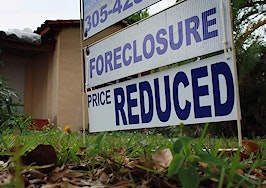Mortgage rates for a 15-year fixed rate loan hit a new all-time low this week as rates for 30-year loans also dipped by one-tenth of a percentage point, according to Freddie Mac’s weekly lender survey.
“Concerns about the Delta variant, and the overall trajectory of the pandemic, are undoubtedly affecting economic growth,” Freddie Mac Chief Economist Sam Khater said. “While the economy continues to mend, Treasury yields have decreased, and mortgage rates have followed suit. Unfortunately, many homebuyers are unable to take advantage of low rates due to low inventory and high prices.”
For the week ending July 22, Freddie Mac’s weekly Primary Mortgage Market Survey reported average rates for the following types of loans:
- For 30-year fixed-rate mortgages, rates averaged 2.78 percent with an average 0.7 point, down from 2.88 percent last week and 3.01 percent a year ago. Rates for 30-year loans hit an all-time low of 2.65 percent in records dating to 1971 during the week ending Jan. 7, 2021.
- Rates on 15-year fixed-rate mortgages averaged 2.12 percent with an average 0.7 point, lower than 2.22 percent last week and down from 2.54 percent a year ago. The mark was a new all-time low for 15-year fixed rate mortgages in records dating to 1991, replacing the previous low set Jan. 7, 2021, when rates averaged 2.16 percent.
- For 5-year Treasury-indexed hybrid adjustable-rate mortgage (ARM) loans, rates averaged 2.49 percent with an average 0.4 point, slightly higher from 2.47 percent last week and 3.09 percent a year ago. Rates on 5-year ARM loans hit an all-time low of 2.56 percent during the week ending May 2, 2013, in Freddie Mac records dating to 2005.
Freddie Mac’s survey tracks conventional, conforming, home purchase loans for borrowers who put 20 percent down and have excellent credit. Borrowers taking out bigger loans, making smaller down payments, or with lower credit scores can expect to be quoted higher rates.
Rates rose temporarily in February and March as markets reacted to inflation fears. They’ve since come back down and have remained around 3 percent. But rising home prices and rents could fuel inflation and force the Federal Reserve to taper its purchases of Treasurys and mortgage bonds, which could send rates back up.








